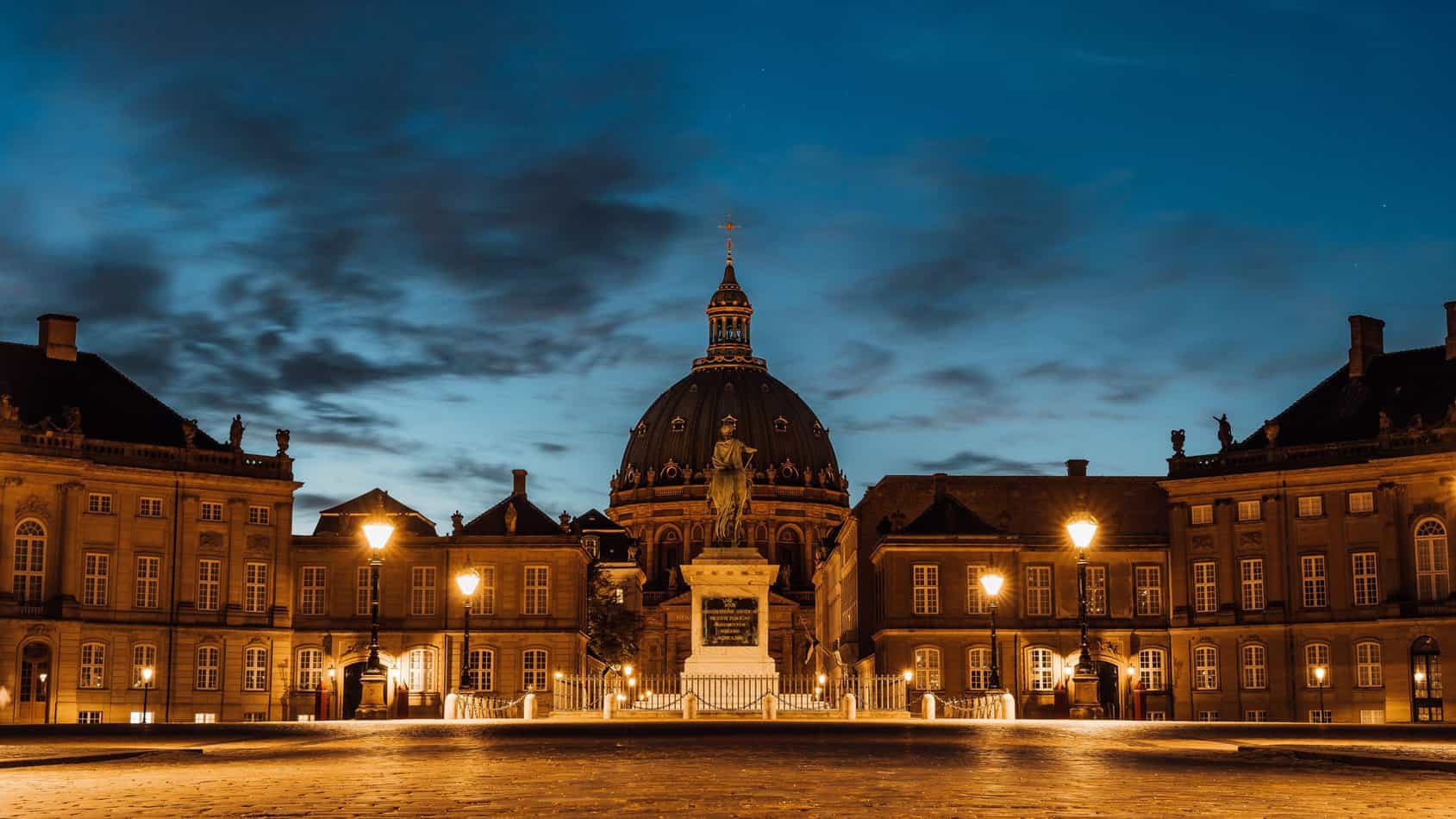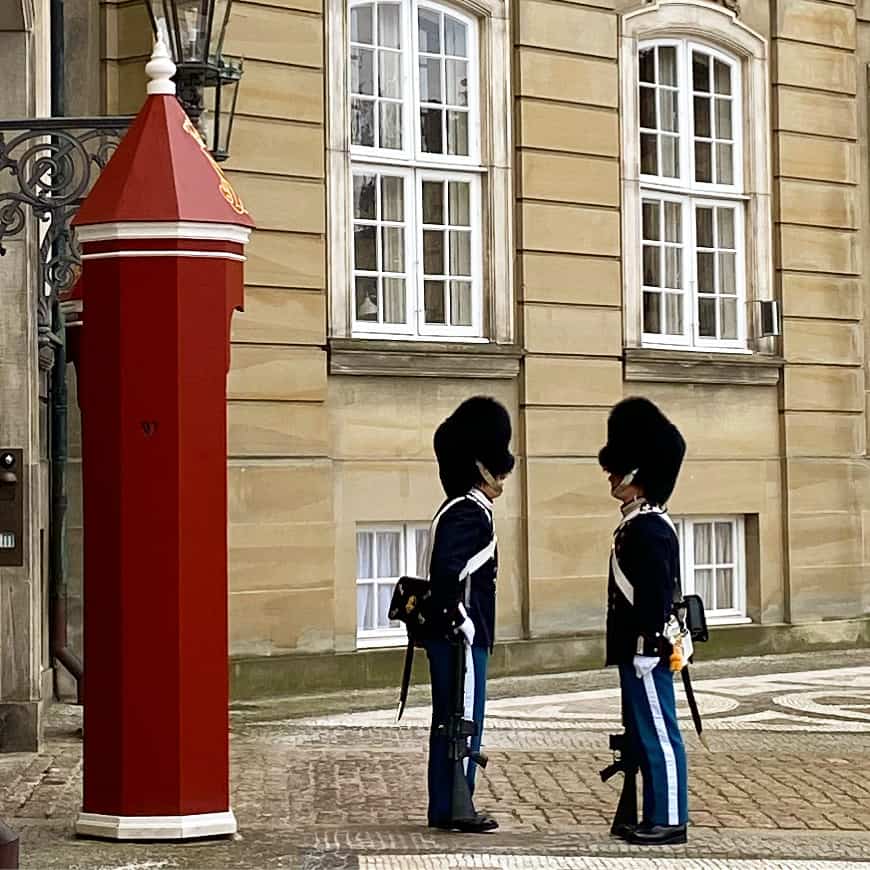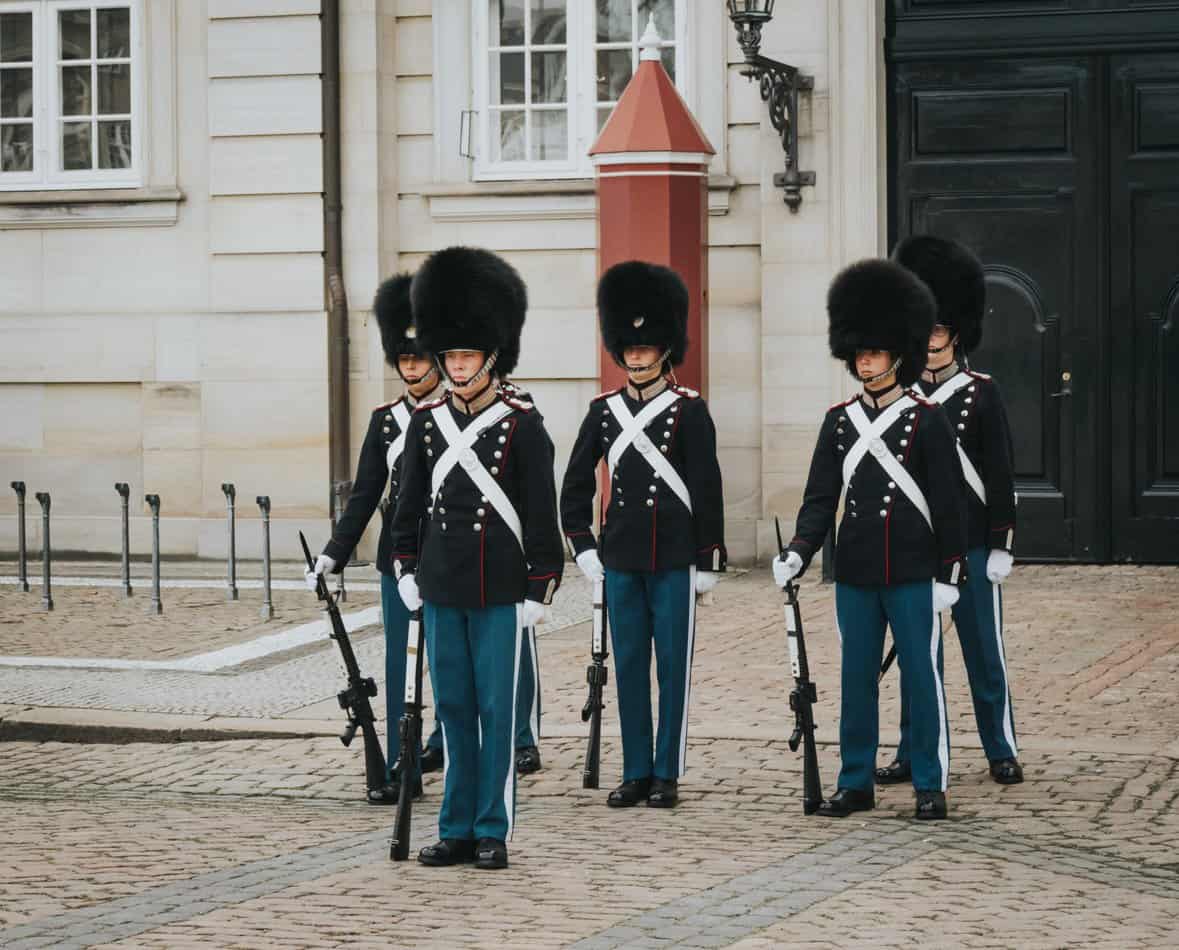Amalienborg Slotsplads 5, 1257 København K Google Maps

Amalienborg is a palace complex located in the heart of Copenhagen, just a few minutes’ walk from Kongens Nytorv – The King’s New Square. It is the official residence of the Danish royal family, and it consists of four identical Rococo-style palaces arranged around an octagonal courtyard.
The palaces were built in the mid-18th century by the Danish architect Nicolai Eigtved, and they were originally intended as homes for four noble families. However, when the previous royal residence, Christiansborg Palace, was destroyed by fire in 1794, the royal family moved to Amalienborg and made it their permanent home.
The four palaces are named after their original owners: Christian VII’s Palace (also known as Moltke’s Palace), Christian VIII’s Palace (also known as Levetzau’s Palace), Frederick VIII’s Palace (also known as Brockdorff’s Palace), and Christian IX’s Palace (also known as Schack’s Palace). Each palace has its own distinct interior design and furnishings, reflecting the taste of its former owner.
In the center of the courtyard stands an equestrian statue of King Frederik V, who commissioned the construction of Amalienborg. The statue is surrounded by a large fountain, which serves as a popular meeting place for locals and tourists.
Today, parts of the Amalienborg complex are open to the public, including the Amalienborg Museum, which is located in Christian VIII’s Palace and features exhibits about the history of the royal family and the palace itself.
The changing of the guard ceremony at Amalienborg is a popular attraction for visitors to Copenhagen. The ceremony involves the Royal Guard marching from their barracks at Rosenborg Castle to Amalienborg, where they are met by a new set of guards who take over their duties. The ceremony takes place daily at noon, and it is free to watch. This is very recommendable and something I do myself a couple times a year.

Here are some additional facts and information about Amalienborg:
- Amalienborg is located in the district of Frederiksstaden, which is known for its grand architecture and elegant public spaces. Other notable landmarks in the area include the Marble Church (Frederik’s Church), the Royal Danish Theatre, and the historic Nyhavn canal.
- The palaces at Amalienborg are still used as official residences by the Danish royal family, although not all of the palaces are occupied at the same time. Queen Margrethe II reside in Christian IX’s Palace, while other members of the family live in the other three palaces.
- In addition to the Amalienborg Museum, there are several other museums and galleries in the Frederiksstaden area. These include the Danish Museum of Art & Design, the Royal Danish Arsenal Museum, and the Thorvaldsen Museum, which is dedicated to the works of the Danish sculptor Bertel Thorvaldsen.
Amalienborg is also the site of several important events and ceremonies throughout the year. These include the Queen’s birthday celebration on April 16th, the New Year’s address by the Queen on January 1st, and the annual lighting of the Christmas tree in the courtyard. During major royal events, such as weddings and funerals, the courtyard is often used as a gathering place for the public to pay their respects.
Is the museum accessible for disabled?
Yes, the Amalienborg Museum is accessible for disabled visitors. The museum is located on the ground floor of Christian VIII’s Palace, and there is an elevator to provide access to the museum for wheelchair users and visitors with mobility impairments.
The museum also has tactile maps, audio guides, and large print guides available for visitors with visual impairments, and staff members are available to assist with any accessibility needs. Additionally, the museum offers special guided tours for visitors with disabilities upon request.
It’s worth noting that the historic nature of the palace complex can make some areas of the museum difficult to navigate for visitors with certain disabilities, such as those with sensory sensitivities or difficulty with stairs. However, the museum staff are trained to provide assistance and accommodations as needed to make the visit as comfortable and enjoyable as possible.

Is the museum suitable for kids?
Yes, the Amalienborg Museum can be a suitable destination for children. The museum offers a variety of exhibits and displays that can be interesting and engaging for kids of different ages.
One of the highlights for kids is likely to be the collection of royal treasures, which includes crowns, scepters, and other regalia used by Danish monarchs over the centuries. There are also displays of royal clothing, including dresses and uniforms worn by members of the royal family.
In addition to the exhibits, the museum offers interactive elements that can be fun for kids. For example, there is a treasure hunt activity that challenges visitors to find hidden objects throughout the museum, and there are touchscreens and other interactive displays that allow visitors to learn more about the history of the palace and the royal family.
It’s worth noting that some of the exhibits may be more interesting for older kids, as the museum focuses primarily on the history and art of the royal family rather than on hands-on activities or play areas. However, with parental guidance and support, many children can find the exhibits and displays at Amalienborg Museum to be both educational and entertaining.
Opening hours:
The Amalienborg Museum is typically open seven days a week, although the exact hours of operation may vary depending on the time of year. The opening hours can be found below, however, it’s important to note that hours of operation are subject to change, and it’s always a good idea to check the official Amalienborg Museum website or contact the museum directly to confirm the current hours and any special closures or events that may be taking place.
- January 2 to June 30: Daily from 10:00 a.m. to 4:00 p.m.
- July 1 to August 31: Daily from 10:00 a.m. to 5:00 p.m.
- September 1 to December 31: Daily from 10:00 a.m. to 4:00 p.m.
When is the best time to visit?
The best time to visit the Amalienborg Museum largely depends on your personal preferences and interests. However, here are some factors to consider when planning your visit:
- Weather: Copenhagen’s weather can be quite chilly and damp in the winter months, so if you prefer milder temperatures and longer days, you may want to plan your visit for the spring or summer months. However, keep in mind that these months can also be more crowded with tourists.
- Events: If you’re interested in attending special events or ceremonies at Amalienborg, such as the changing of the guard or the lighting of the Christmas tree, you may want to plan your visit around these occasions. Be sure to check the museum’s website or contact them directly for information about upcoming events.
- Crowds: As a popular tourist destination, Amalienborg can get quite crowded, especially during peak travel seasons. If you prefer to avoid crowds, you may want to plan your visit for a weekday, or consider visiting during the museum’s off-season (January through March).
